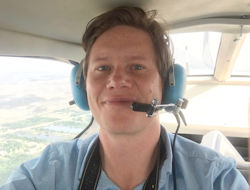SEJournal Online is the digital news magazine of the Society of Environmental Journalists. Learn more about SEJournal Online, including submission, subscription and advertising information.
Inside Story: Letting Residents Take the Lead in ‘Polluter’s Paradise’
An investigative project that takes a fresh look at environmental injustice in Louisiana’s “Cancer Alley” was tapped Sept. 30 for the Society of Environmental Journalists’ prestigious Pulliam Award. "Polluter’s Paradise," produced by a team of journalists at The Times-Picayune and The Advocate, and ProPublica, had already placed first for outstanding large-newsroom investigative reporting in SEJ’s 2020 Awards for Reporting on the Environment earlier this year.
 |
SEJ lauded the work’s “deep, evocative on-the-ground reporting, sharp analysis and terrific visual presentation of data [which created] a powerful picture of the oil and petrochemical industries' impact on Louisiana's people and environment.” And SEJ’s awards judges added the reporting depicted those affected as more than just victims: “The series … did something else very important. It did not depict African Americans only as victims of pollution. It depicted them as empowered, trying to fight with the moral force of boots on the ground.”
SEJournal Online recently caught up with the project’s Tristan Baurick, environment reporter at the Times-Picayune/New Orleans Advocate (pictured at right). Here is the edited conversation. Plus, watch a video about the winner project.
SEJournal: How did you get your winning idea?
Tristan Baurick: We let the data narrow our focus to a few areas where emissions and health risks were especially high. Having been a city government reporter, I really latched on to one town's use of incorporation to assert some local control over the petrochemical industry and halt its growth within its city limits. The new government mirrored the mostly Black, mostly poor community and its long-ignored concerns that petrochemical facilities were harming people's health.
SEJournal: What was the biggest challenge in reporting the series and how did you solve that challenge?
Baurick: I had not covered the petrochemical industry or this region of Louisiana before. I took a slow approach at first, setting up long, unfocused listening meetings and driving tours with one or two St. Gabriel residents at a time. I let them take the lead and show me what they thought was important.
SEJournal: What most surprised you about your reporting/findings?
Baurick: It surprised me that St. Gabriel's incorporation effort had been so effective in keeping new chemical plants out. It worked so well, in fact, that the industry has made sure no other communities have formed city governments in the same industrial corridor.
SEJournal: How did you decide to tell the series and why?
Baurick: We decided to fuse strong, ground-breaking data about health risks from chemical emissions with the story of one small community and its uncommon approach to reining in the chemical industry. We focused less on the obvious leaders — the politicians and activists — and more on the people in the background who lived with the challenges of polluted air and water and had pushed for change.
SEJournal: What would you do differently now, if anything, in reporting or telling the series and why?
Baurick: I would have liked replicating our first story's immersive approach with other stories in the series. We really tried to give a sense of place with our reporting on St. Gabriel and I think we might have been able to do the same with some of the other communities we highlighted or planned to highlight.
‘If you have time, take a slow, easy approach
with the initial reporting. It helps build trust with
sources that might be uncomfortable with reporters.’
SEJournal: What lessons have you learned from your project?
Baurick: If you have time, take a slow, easy approach with the initial reporting. It helps build trust with sources that might be uncomfortable with reporters. These initial sources may then “vouch” for you and connect you with other sources. Show that you're genuinely interested in understanding their perspective and not simply extracting quotes and getting “color” for your lede.
SEJournal: What practical advice would you give to other reporters pursuing similar projects, including any specific techniques or tools you used and could tell us more about?
Baurick: Stories about Cancer Alley tend to follow a well-traveled path, and that's largely because there's really not much that's new to report. Pollution continues to worsen, people continue to get sick and leaders seem unwilling to do anything about it. As I mentioned above, the main tool we used to solve this was to give the reporting plenty of time. That allowed us to turn over lots of stones, follow plenty of dead ends and get to know the community we were covering.
Tristan Baurick has been an environment reporter with The Times-Picayune | New Orleans Advocate since 2017. His work focuses on Louisiana's land loss crisis, coastal restoration, fisheries and the oil industry. Baurick was named the 2018 Louisiana Newsperson of the Year by the Louisiana-Mississippi Associated Press Managing Editors and was a Pulitzer Center Connected Coastlines grant recipient in 2019. He was awarded a year-long Ted Scripps environmental journalism fellowship at the University of Colorado-Boulder in 2012-13 and has twice been a fellow of the Institute for Journalism and Natural Resources. While working for his hometown newspaper, the Kitsap Sun in Washington state, he trained and worked as a wildland firefighter for a story that earned the Society of Professional Journalists’ Sigma Delta Chi award for feature writing.
* From the weekly news magazine SEJournal Online, Vol. 5, No. 38. Content from each new issue of SEJournal Online is available to the public via the SEJournal Online main page. Subscribe to the e-newsletter here. And see past issues of the SEJournal archived here.














 Advertisement
Advertisement 



